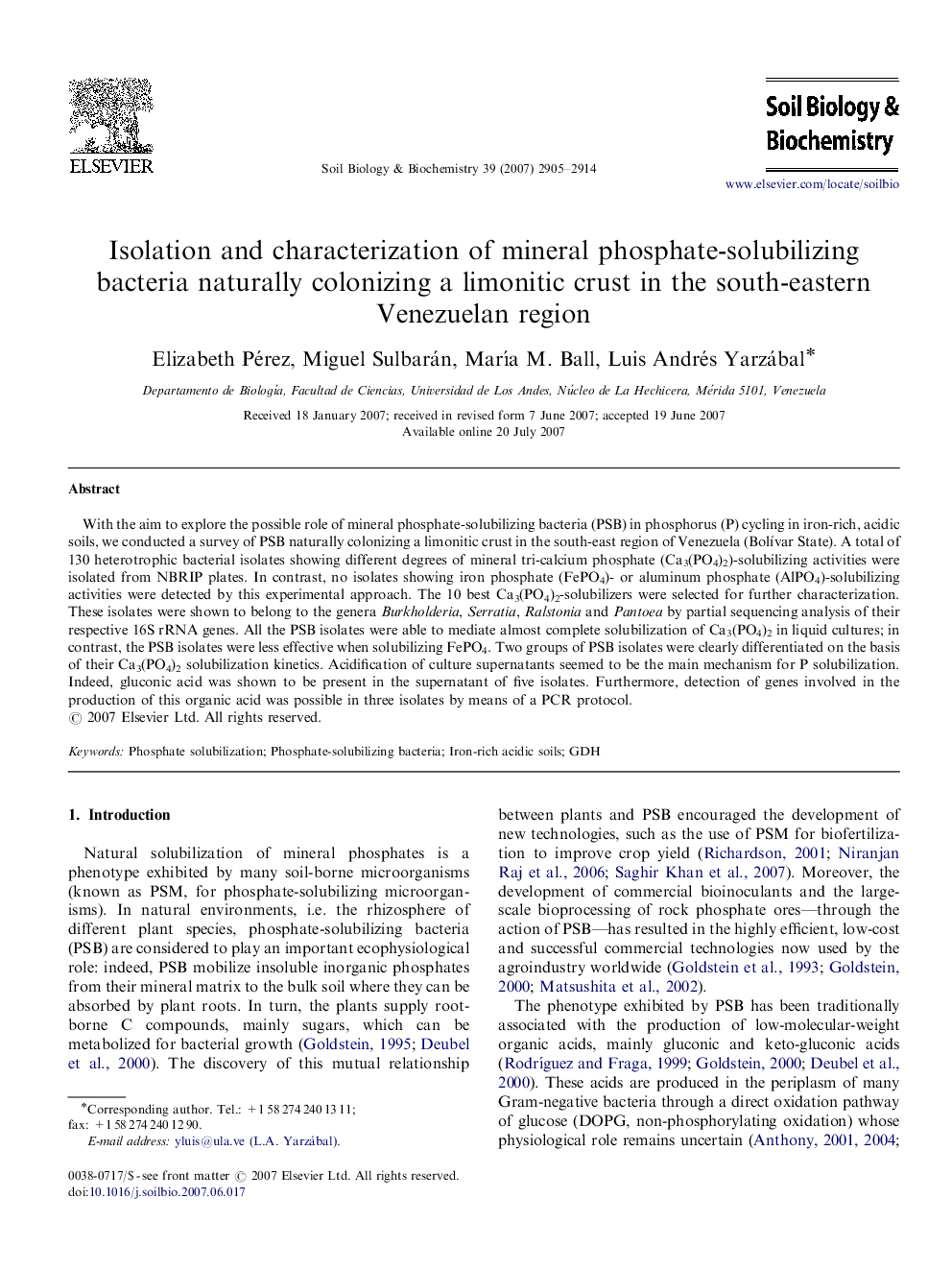| Article ID | Journal | Published Year | Pages | File Type |
|---|---|---|---|---|
| 2027039 | Soil Biology and Biochemistry | 2007 | 10 Pages |
With the aim to explore the possible role of mineral phosphate-solubilizing bacteria (PSB) in phosphorus (P) cycling in iron-rich, acidic soils, we conducted a survey of PSB naturally colonizing a limonitic crust in the south-east region of Venezuela (Bolívar State). A total of 130 heterotrophic bacterial isolates showing different degrees of mineral tri-calcium phosphate (Ca3(PO4)2)-solubilizing activities were isolated from NBRIP plates. In contrast, no isolates showing iron phosphate (FePO4)- or aluminum phosphate (AlPO4)-solubilizing activities were detected by this experimental approach. The 10 best Ca3(PO4)2-solubilizers were selected for further characterization. These isolates were shown to belong to the genera Burkholderia, Serratia, Ralstonia and Pantoea by partial sequencing analysis of their respective 16S rRNA genes. All the PSB isolates were able to mediate almost complete solubilization of Ca3(PO4)2 in liquid cultures; in contrast, the PSB isolates were less effective when solubilizing FePO4. Two groups of PSB isolates were clearly differentiated on the basis of their Ca3(PO4)2 solubilization kinetics. Acidification of culture supernatants seemed to be the main mechanism for P solubilization. Indeed, gluconic acid was shown to be present in the supernatant of five isolates. Furthermore, detection of genes involved in the production of this organic acid was possible in three isolates by means of a PCR protocol.
